Intermediate Trail Riding
By Melvin Bradley, Department of Animal Husbandry College of Agriculture
Originally published in the Feb. 1993 issue of Mules and More
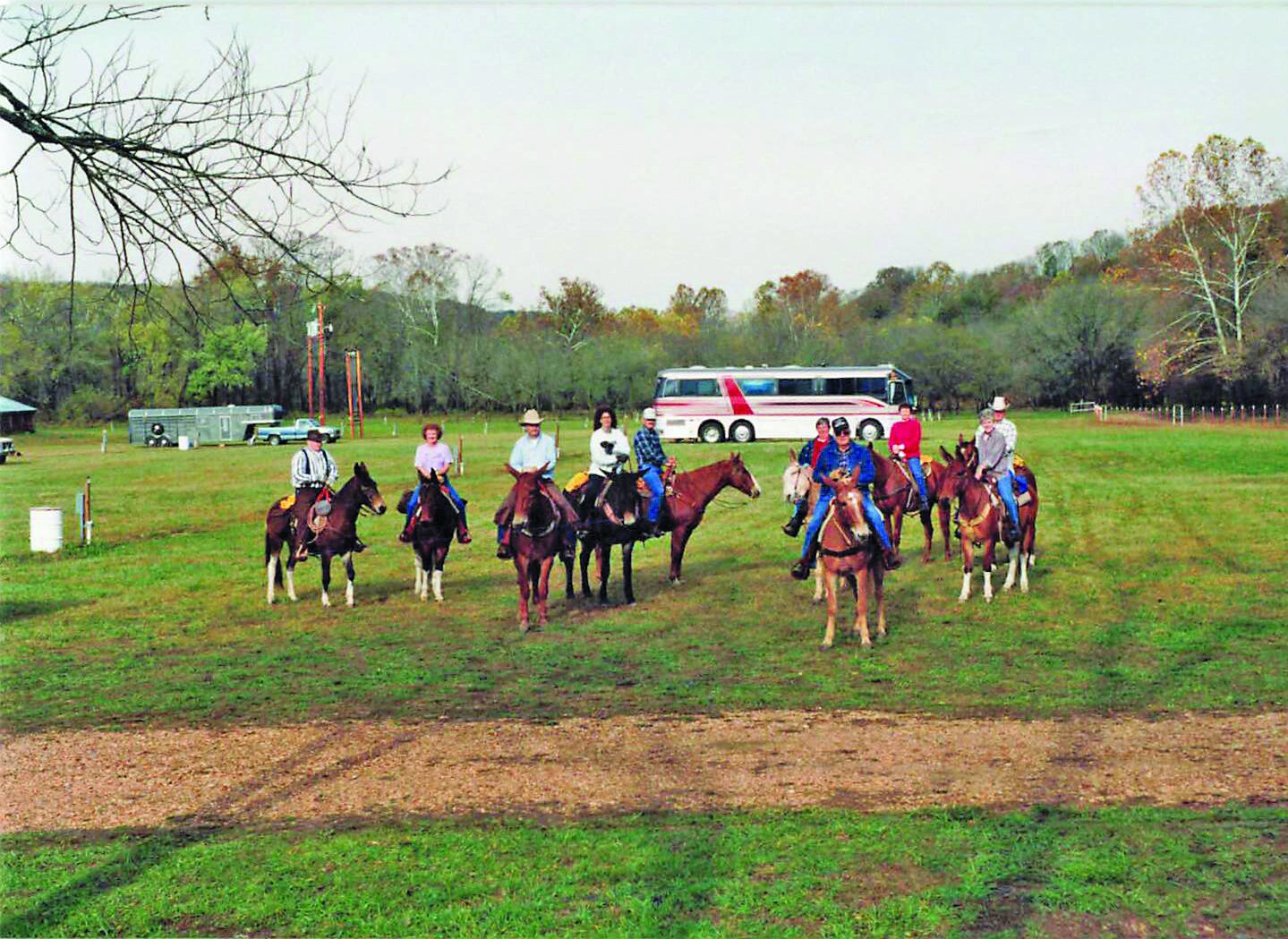
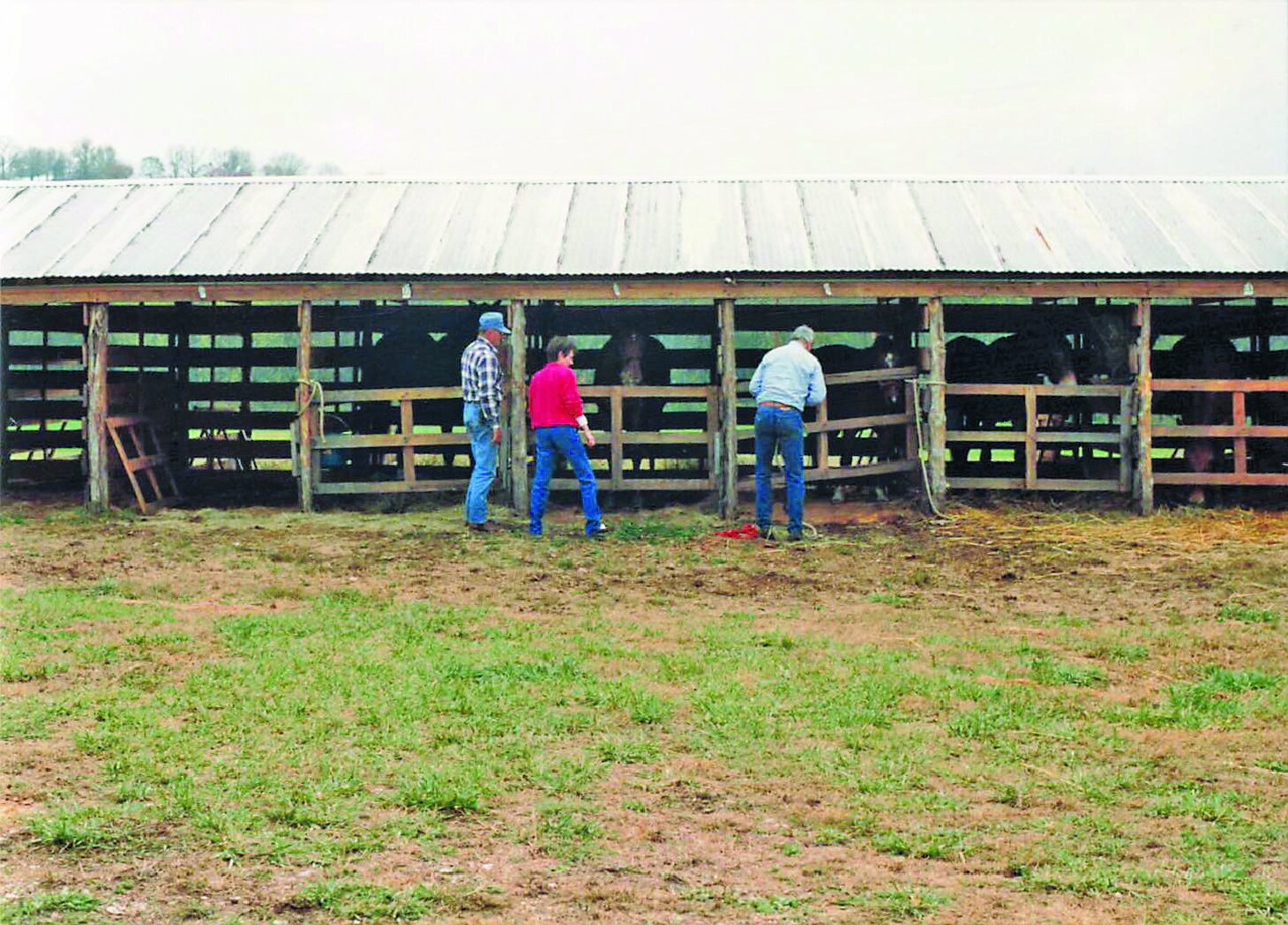
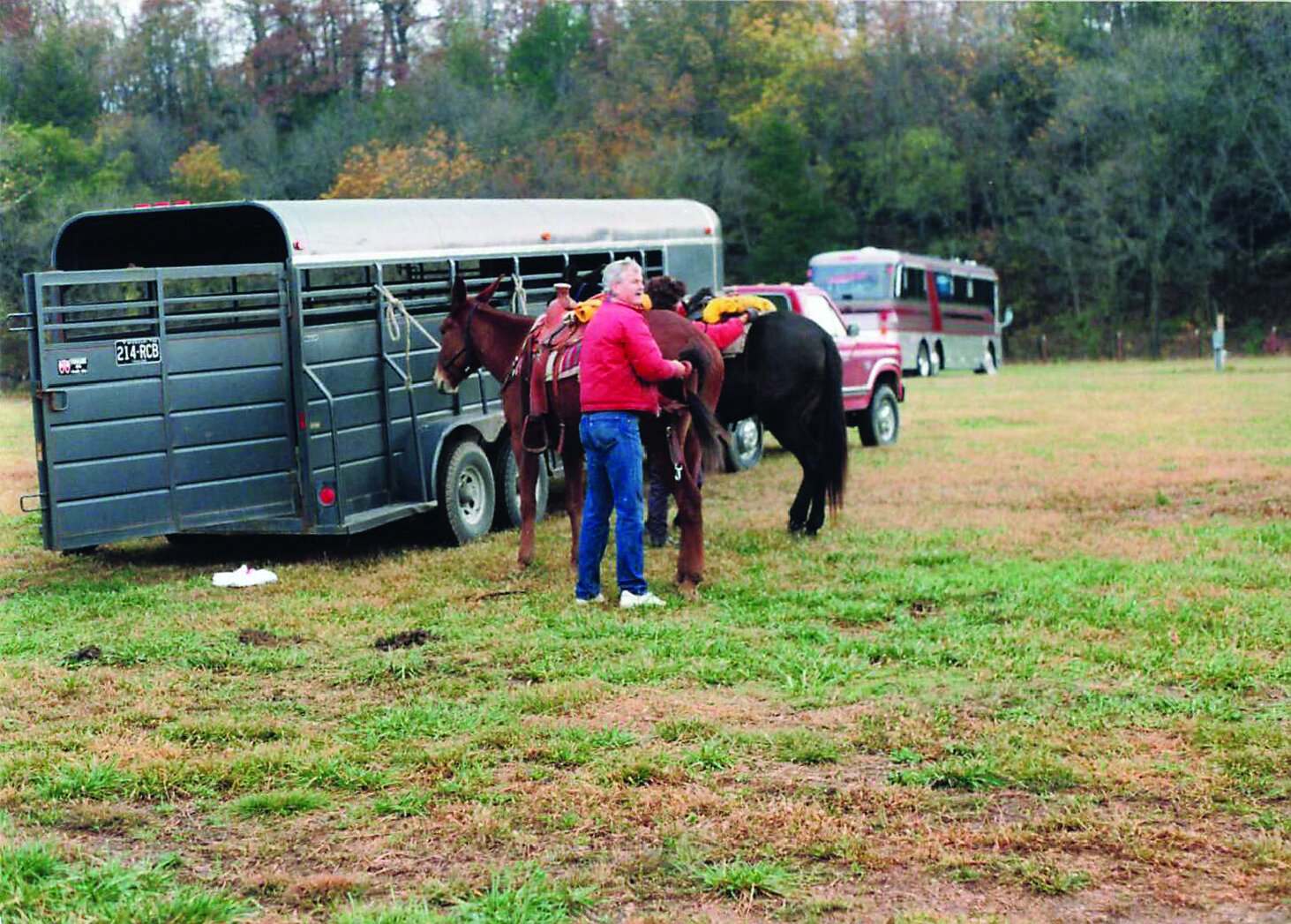
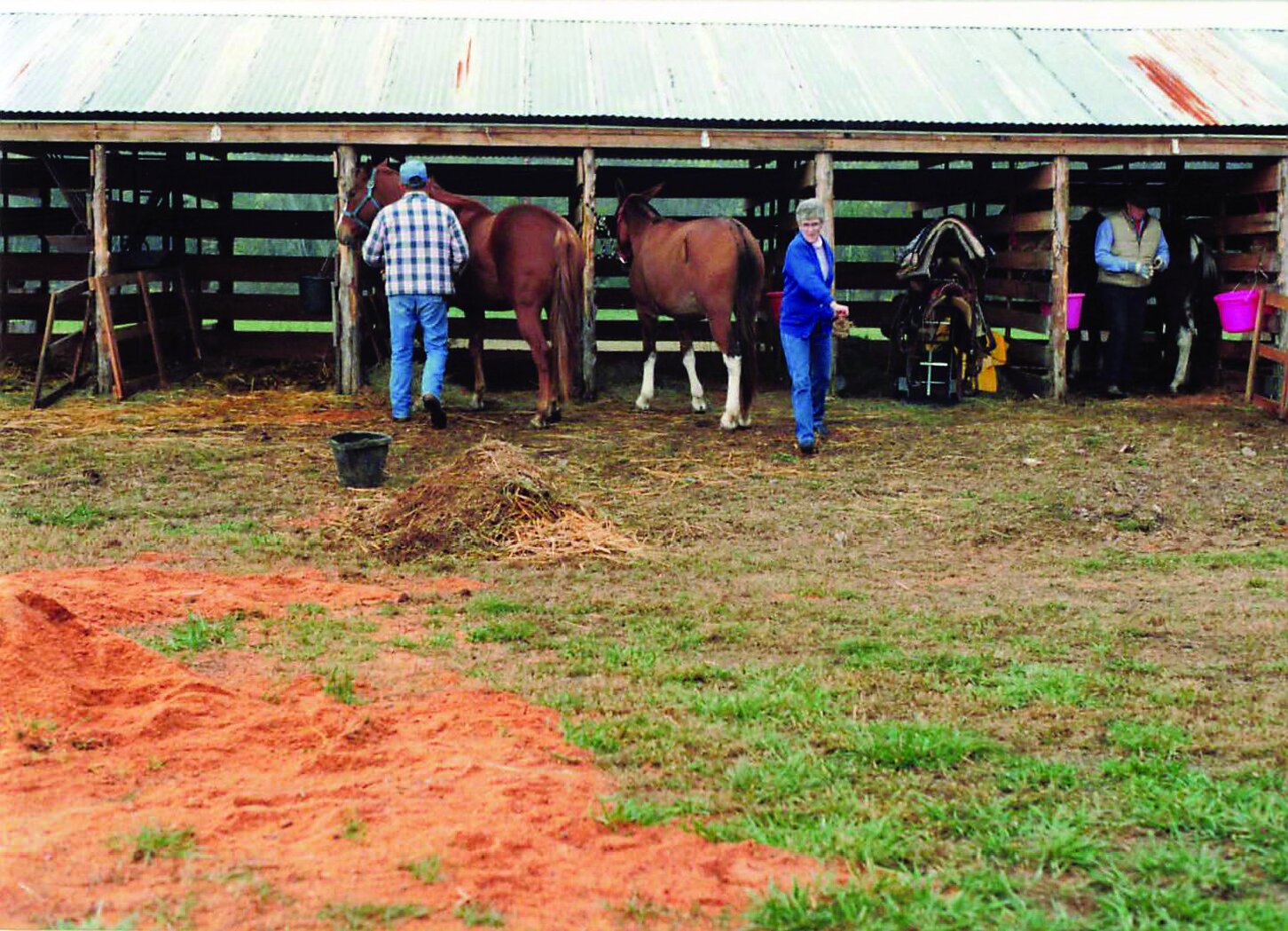
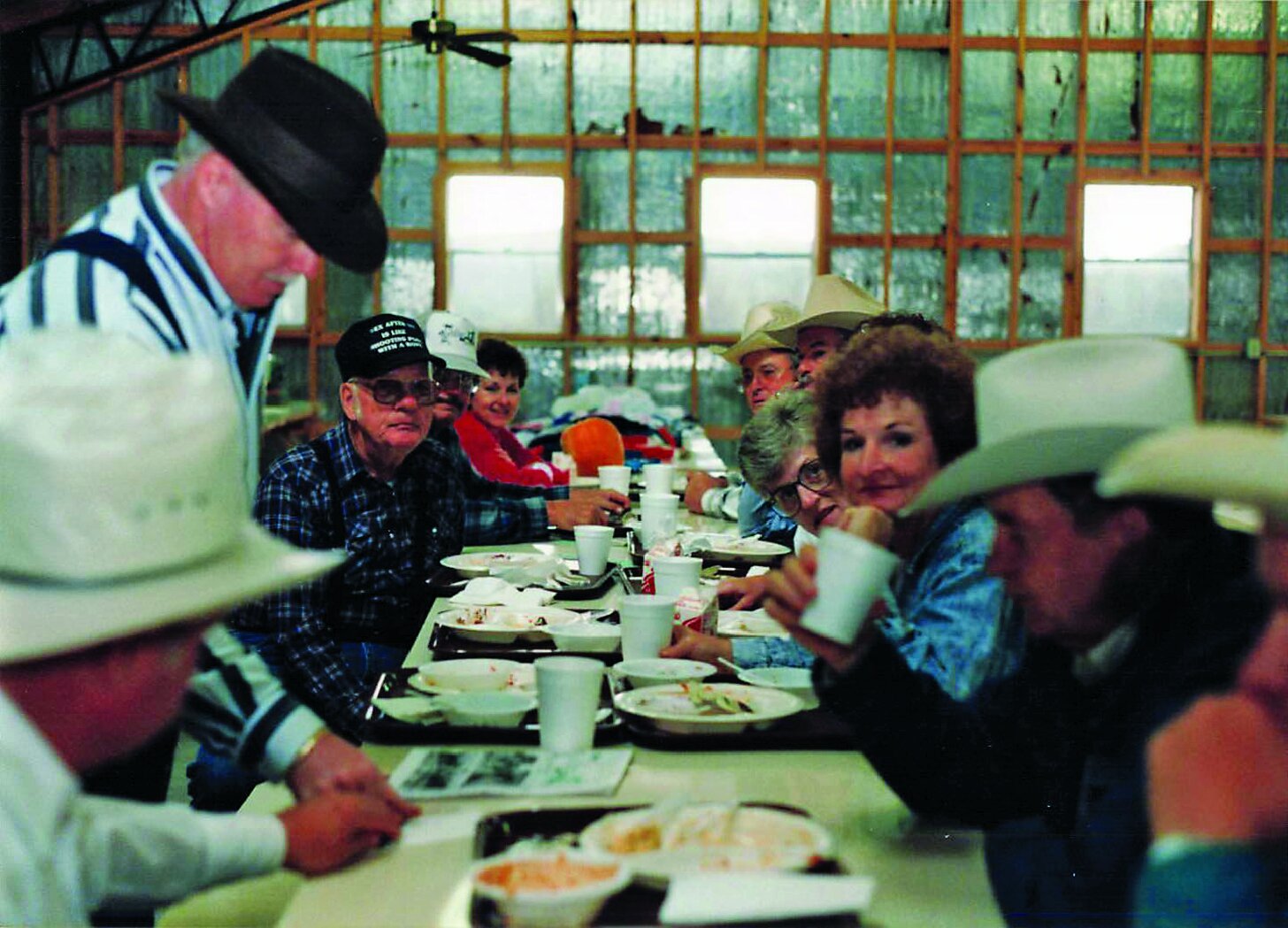
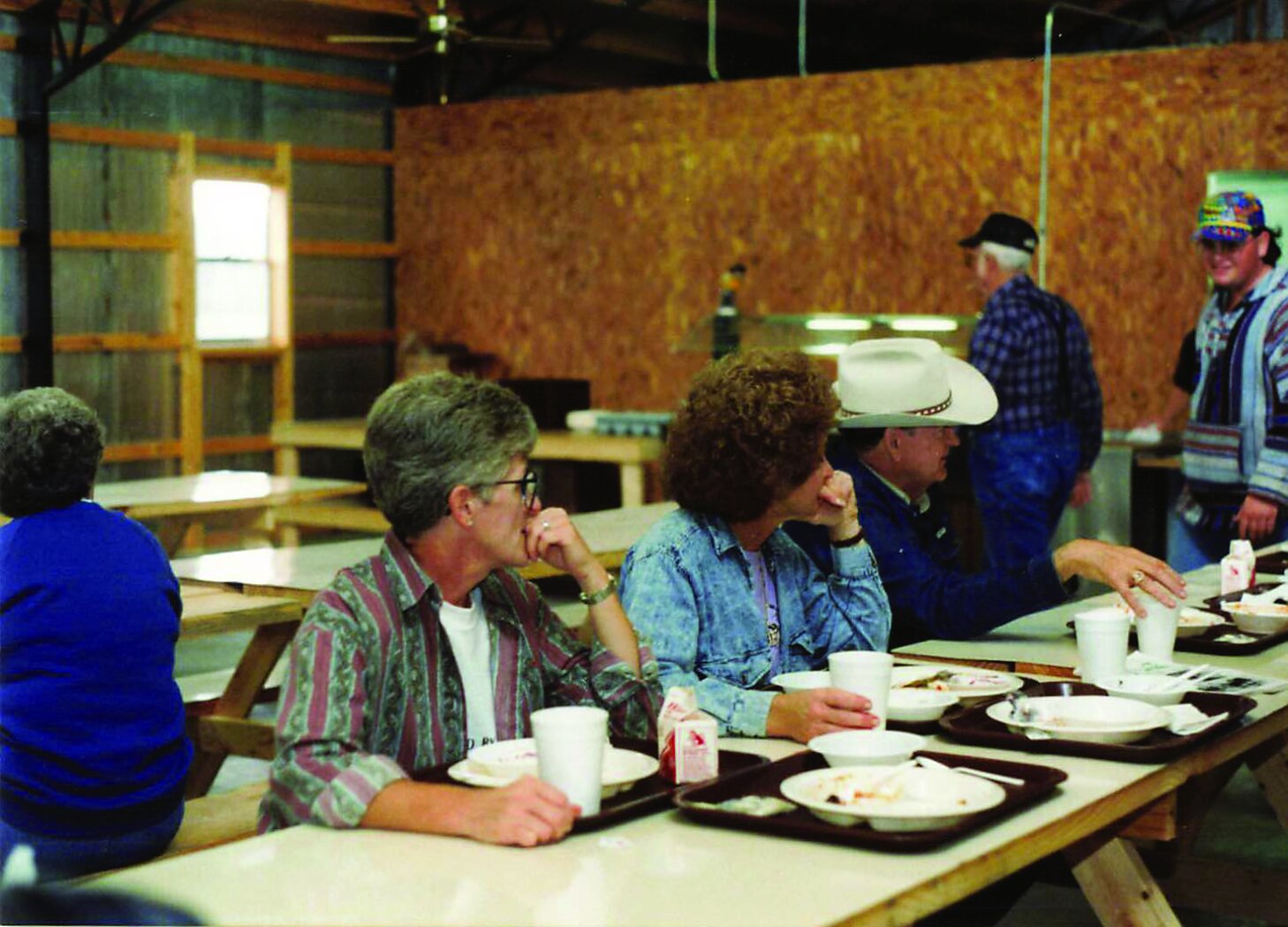
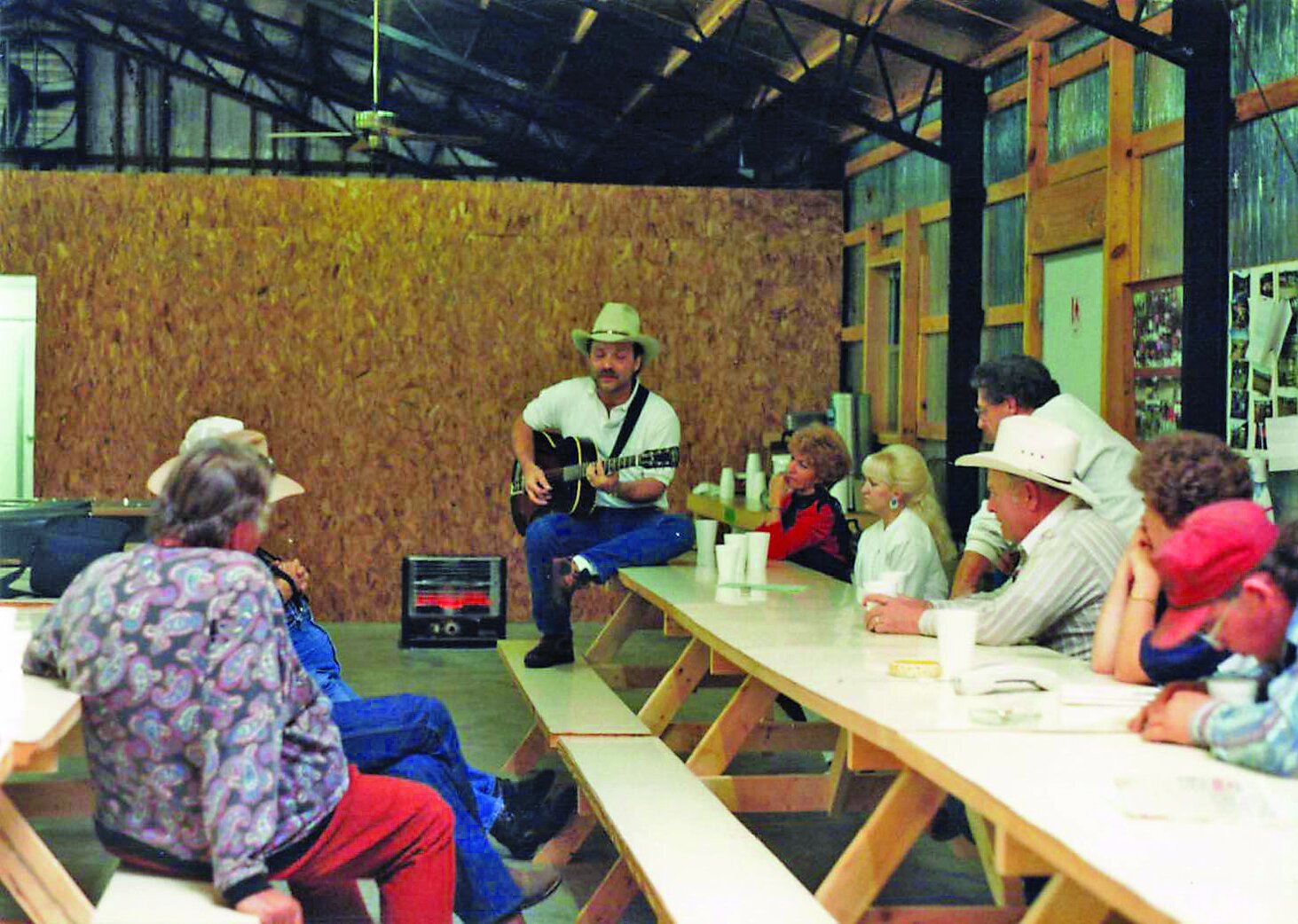
More and more families are having fun trail riding. This activity is reasonably inexpensive, is noncompetitive, and affords relaxation on nature’s scenic trails.
Many individuals seek trail riding as a hobby in their retirement. They enjoy many acquaintances from past years and look forward to making new ones on each day’s ride.
Many youngsters also enjoy the responsibility of a horse or pony as they ride with their families. This helps them grow up to appreciate the contribution a horse can make to their development. And the natural surroundings of scenic trails provide a most enjoyable setting.
A few shots from a trail ride in November 1992
Intermediate Trail Riding
Intermediate trail riding is considered to be of more than one day’s duration. The ride may be arranged for and sponsored by a local group or it may be a commercial trail ride. Each year more commercial rides are available to our nation’s riders.
A ride may range up to a week or more in length and cover 15 to 40 miles a day in a continuous direction. In this case some provision is made to bring riders’ equipment forward each day from the previous night’s camp to the new location.
The ride may start from and return to a central camp site each day. For this ride the camping equipment remains at a central camp site each day. In either case, riders are under supervision of a trail boss. Large rides may have an all-day “fast ride and an all-day “slow ride,” along with a half day “fast and a half day “slow” ride.
Selecting the Ride
A ride should be judged on scenic beauty, accommodations, and cost. Before committing for a week’s ride, ask questions of someone who has been on the ride. Ask about the terrain, how far they ride each day, how many hours are ridden daily, and what kind of housing you need.
Clear, cold water running through meadows with tree-fringed banks nearly always appeal to trail riders. If the terrain allows, a stream may be crossed many times in a day’s ride. A ride may go upstream until noon where lunch is served on its banks, then riders return down the opposite side in the afternoon. During the process they may cross the stream 10 or 12 times. Streams can be combined with rough country to give scenic beauty and add interest to the ride. The most interesting scenes should be used as lunch sites or rest stops.
Hill and mountain riding can be popular when carefully selected. They can be challenging to horse and rider. Hill riding in heavy timber may be hot because of little air circulation in warm climates. For this reason, you may wish to ride in the hills during the cool, color season of autumn or in the spring.
It is important when riding in the fall to take rain clothes along, because if you get wet it can be very chilling before the end of the day.
Some riders can be arranged through areas of wildlife preserves and areas where game can be seen. A ride where wild turkey or deer can be seen adds interest and some thrills.
Fragrance of pine trees following a shower is always enjoyed by trail riders. The remoteness and quietness of riding through pine forests meet with great favor.
Consider Camp Accommodations
Consider facilities of the camp from which you are going to make the ride. Most commercial camp sites have electrical service in areas offering shade. Pickup campers, travel trailers, and tents are the living units of most trail riders. A large camp may accommodate 1,500 riders, have miles of electrical wiring, a large cooking and dining tent, and horse show arena.
Most riders appreciate a hot meal delivered to them at a designated spot for the noon luncheon. The fair should be adequate, with two or three kinds of drinks available. It should also be scenically located.
Consider other accommodations for the ride. Check for bath or shower accommodations.
Additional recreational opportunities may accompany some rides. Some people enjoy swimming their horses at the end of a long ride after they have cooled them out. This is a good sport, but can be dangerous if not handled properly. If your horse is not an experienced swimmer, use a neck rope. Some horses will rear when they get in deep water before they begin swimming. A rope gives the rider protection. If dislodged and hit by the horse’s knee or foot, the temporary incapacitation may result in drowning. Always have someone with you when swimming a horse.
A good change of pace for riders is to come in early and take a canoe float trip. Where streams have a reasonable amount of current, a float trip of several miles can be taken in a few hours. There may be operators who will rent canoes and pick up canoers downstream at predesignated locations.
Most youngers and many adults enjoy a dance at night after trail riding. Some rides furnish bands and a dance floor entertainment. However, riders who like to sleep early may not enjoy “pop bands” and dance floors near where they camp.
Many trail riders have organized horse shows with a variety of classes, including a number of fun classes. Remember, the main purpose of the trail ride is to have fun. People who get “uptight” about winning a horse show should leave showing for another occasion.
Most rides offer church services on Sunday. Some people even go so far as getting married on their horses on trail rides.
Type of Horse for Trail Riding
Most any type, size, age and quality of horse can be seen on large trail rides. This is one reason trail riding is popular, there is no competition and no rivalry between riders as they follow the trail boss over scenic trails. Serious trail riders, however, usually agree on broad generalities to describe a good trail horse.
Generally speaking, a good trail horse is large enough to carry the rider well. He is soft in his gaits for his breed, with more than average speed at the walk. He should travel with a purpose. He should be willing to cross all of the obstacles, be surefooted, and require a minimum of guidance from the rider. Furthermore, he should be disease resistant and should not be accident prone. On large trail rides perhaps there are fewer than 10 percent of the horses of this description.
Avoid dangerous horses that may buck or run away, or those that intentionally kick other horses and people. Since much of the riding is done at a walk, a horse should be able and willing to stride long and fast at a rate of about four miles an hour. When most of the horses in a line are walking and your horse has to job or trot much of the time to keep up, you may be in need of a different horse. On the other hand, you don’t want a “prancey” or “chargey” horse that will not settle down and walk.
There is a lot of difference in the weight-carrying ability of horses. Some horses should be rested every other day. Others can carry a rider every day. Generally speaking, horses should not be asked to carry much more than 20 to 25 percent of their body weight. Weights above this amount are tiresome for most horses.
Conditioning Yourself and Your Horse
Conditioning yourself and your horse is important before serious trail riding. Although some riders condition their horses at slow speeds on trail rides, generally speaking, horses need forced exercise. It may take a minimum of three weeks to get a horse ready for a trail ride. A fat horse may need about four or five weeks of reduced feed and increased riding to get in condition. Young horses require more time.
Proper conditioning may include a half hour’s ride a day the first few days, increased to an hour or more daily on week later, finally increased to two hours. By the end of the conditioning period, a daily ride of about half the distance of an average day on the trail is sufficient. Two horses can be conditioned at the same time by riding one and leading the other. For a horse that is too thin for serous trail riding, increased the feed and exercise to gain more conditioning before the de. A horse will likely lose weight while on a ride.
Don’t allow you horse’s feet to get in poor condition. If the shoe is left on too long, the heels overgrow it and extend down over the branches of the shoe. This can cause corns and other serious foot problems. Remove shoes before they reach this point and either reshoe or trim the feet for going barefoot.
Have your horse shod ten days to three weeks ahead of the ride. This allows the sole to thicken and the wall time to grow down enough to get the horse’s feet up off the rocks. If correction is needed, it give the owner time to do so before leaving home. Such correction might be recovery from a nail prick, interfering, or discovery that the horse needs pads.
Equipment for Trail Riding
The type of equipment for trail rides depends on the type of ride, weather conditions, and accessibility of the trail. It is usually best to take along your own grain rather than buy it on the ride because the horse is used to eating it. He may go off his feed or colic if feed is changed. Because of inconvenience of hauling hay, it is usually best to buy it on the ride. A box or pan is needed for feeding grain. Pans that stack together require much less space in transportation. In order to feed the appropriate amount, take along the measure used at home.
Hay feeders are convenient for trail riding. The sash cord type tends to twist and makes filling difficult. Types with rings at the tip do not twist and are easier to open and close for convenience in filling. Take along neck ropes. These should be strong, longer than usual, and soft enough to stay tied easily. A neck rope 12 feet long allows tying around a rather large tree. Use a halter with a neck rope to keep the horse from begin choked if he pulls back hard.
Take adequate saddle blankets on a trail ride. Horses ridden hard should have 1 ½ inches of padding under their saddles. This requires a saddle with a wide enough gullet to accommodate thick padding. Some pad materials pick up many weed seeds. Padding can be alternated daily to provide dryness and protection for hard working horses.
Many large trail rides have horseshoers available. If your horse requires corrective shoeing, take along an extra set of shoes. Some horses need trailer behind and pads in front.
Carry water on rides in hot weather. A quart canteen is preferred if it will supply enough eater, because it will bounce less in saddlebags if you are traveling with much speed. A half-gallon container has sufficient weight to pull saddlebags sideways and bounce but is necessary for long, dry rides.
Not every rider in a party needs this much equipment. But one in almost all parties does. Saddlebags are convenient to carry the canteen, neckrope, slicker, hoof pick, camera, or other items. Some riders have wire cutters, which are most convenient if a horse gets tangled in loose wire. One the other hand, park managers and land-owners are skeptical of riders who indiscriminately use wirecutters.
Consider these additional items for your trail ride: an extra cinch, breast collar, cinch strap, curb strap, picket line, and rake. The picket line can also be sued to load reluctant horses, and a rake is convenient to rake droppings away from the horse’s bedding area.
If you have a handyman in the crowd, he may wish to bring a few other items. Saddle soap and a sponge should be available, because you are likely to get your saddle wet crossing streams or riding in the rain. Application of the saddle soap will restore leather items and prevent them from drying out.
Consider some items of medication for your horse. He may need something for abrasions or open wounds. Fly repellent and a thermometer are also recommended items. Many times, especially during early spring, viruses or bacterial outbreaks will go through horses that are bunched together. IF your horse’s temperature at rest is much over 102 degrees, he should be rested that day.
If you are susceptible to poison ivy, chiggers, or other vectors, you may wish to take along some first-aid medication.
Hauling to the Ride
Have solid footing in the bottom of your trailer, such as a mat. If you have a horse that pulls back and tends to have his back feet slip forward, put a one-inch oak cleat across the mat. This will keep him from getting down and will aid him in getting up should he lose his footing.
Feed your horse loose in the trailer while you are training them to become familiar with it. Older horses should be fed in a trailer once in a while.
Check your hitch. A high percentage of trailer accidents result from the trailer coming loose from the automobile. Be sure your hitch is tight and strong. If the ball is not welded, double-nut, and use a heavy chain secured around the frame. If the hitch should fail, the chain should maintain control of the trailer until you could get stopped. All two-horse trailers should have breaks, and in most states they are required by law.
Load the heavy horse on the left in a trailer. This is because roads are higher in the center than on the outside, and you have more control of a load with the weight on the upper side. Give your horse head room, 16 hand horses need 7-foot-tall trailers.
If the weather is cold, blanket your horse. It may even be necessary to close in most of the trailer in the winter. On the other hand, if you unload and find the horses wet from perspiration under the blanket, don’t use it under similar conditions next time.
Consider tying the horse securely with a slipknot in the hope that it could be easily released. It may be all right to haul old, experienced horses in trailers without tying their heads, but in case they get down they can right themselves much easier if their heads are securely tied.
Be sure your direction lights are working. Check them along with brake lights and tail lights for night driving. Drive slowly the first few miles until you get a feel of the rig you are driving.
Picking a Location to Camp
When you arrive in camp, pick your camp site carefully. Most campers like to camp near a river for it’s scenic beauty and convenience of watering horses. Horseflies are worse along a stream than a quarter of a mile away from it.
Consider the opportunities for your horse and the quietness of your location. The quietest spot may be on the edge of camp, and the noisiest near the center of activities such as a horse show arena or dance floor. Avoid camping near a road junction where there will be more traffic, both mounted and vehicle. Last but not least, consider convenience to facilities.
Remember the reason for trail riding is to have fun, so try to avoid inconveniences and accidents. Tie your horses securely. A good idea is using a neck rope with a shank run through the ring in the halter. When tied securely to a picket line or tree, this method is about as secure as any. While older, experienced trail horses will seldom leave camp, young horses on their first ride may be hopelessly lost if they get loose and try to go home.
Many camps have barrels of grain setting around with light covers on them. A loose horse has no trouble getting the lid off such a barrel.
Management on the Trail
Get up early enough in the morning to get your horse cleaned up, watered and fed grain at least an hour and a half before time to ride. Let him stand and eat hay as he wishes. Be sure your neck rope, hoof pick, and water container are in the saddle bag.
Listen carefully to direction before making the day’s ride. Although a trail boss will lead the ride, it is safer and more courteous to pay attention to rules and advice given to riders.
Dismount at refreshment stops. This will allow your horse time to relax a bit and relieve his back from your weight and reduce the chance of a sore back.
A lunch stop affords an opportunity to rest your horse approximately one hour. Find a cool, shady spot if you can. Loosen the saddle cinch and tie him with the neck rope where he can’t twist himself into tree branches. Most horses are not fed at the lunch hour.
A thirsty horse will want to drink at first chance. It is usually considered safe to let a horse drink a substantial amount if he is going to continue to be ridden. However, gorging from cold mountain streams can cause convulsions and can actually cause death. For this reason, it is better to allow a horse under these conditions to drink only five or six swallows of water. Let him drink more when he has had time to cool.
Safety
A red ribbon tied to the tail of a horse indicates he is a kicker. Ride back away from these horses. If crowded, they can severely injure you or your horse. Be sure to lead your horse sufficient distance away from tied horses that are prone to kick so you can’t be reached by their heels. Sometimes they will charge and kick, especially if in camp where they are used to eating.
Saddles have a way of turning in the most inconvenient places. Sometimes saddles will turn because they are not cinched tightly enough. More than likely they turn because the horse is fat and thick in the withers, the saddle is too narrow in the gullet, or for both reasons.
A horse with extreme thickness in the withers needs a saddle with a wide gullet and should always be ridden with a breast collar.
The temptation to ride sideways is great at the end of the day’s ride. It may be restful to the rider, but it causes uneven pressure on the bars of the saddle that may give the horse a sore back.
Management of Camp
When you return to camp, tie your horse on a picket line and give him a full feed of hay. It may be well to leave saddles on for half an hour to an hour. If a hot horse is uncinched and unsaddled immediately, blood may rush into the veins under the saddle and cause puffs or knots. Offer a feed of grain 1 to 1 ½ hours after cooling, watering, and eating hay on the picket line. Feed grain again before going to bed, then in the morning 1 ½ hours before the ride starts. Feed hay free choice while the horse is in camp.
Don’t litter the scenic trail. If you are conducting a ride, always bring trash containers to collect empty bottles, cans, and litter. Carry trash with you until you stop, either in a saddle bag or in your pocket. Be careful throwing cigarettes aside in a dry season. Remember, most trail riders are guests, either of private landowners or public property. It is to the benefit of everyone to be considerate and to keep them clean.
Happy trail riding to you!
